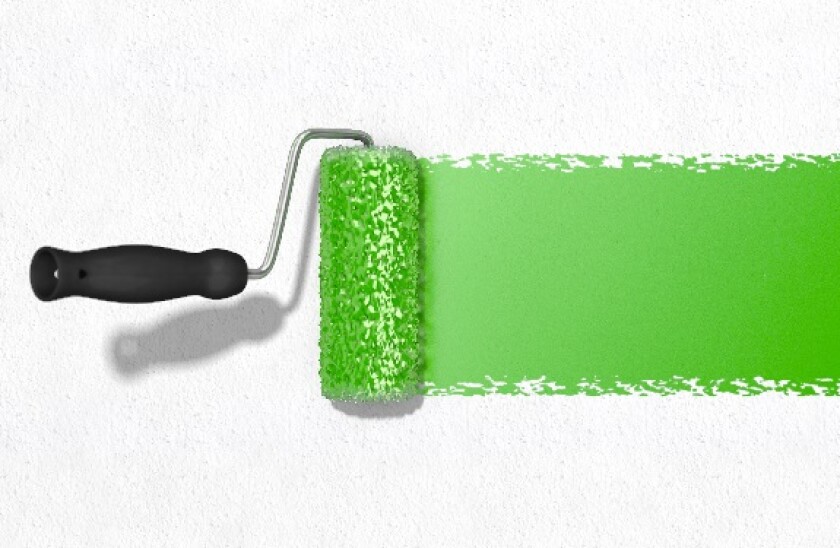We’ve grown to know and love green bonds but is it time to reconsider? Dion Bongaerts and Dirk Schoenmaker have written a paper for Bruegel proposing a different model for sustainable financing.
They suggest issuers turn instead to green certificates that are attached to regular bonds, but can be traded separately.
They say this would preserve liquidity in bond issues, by avoiding the fragmentation of debt issuance into green and non-green. This would make financing cheaper for issuers going green than at present, they claim, and in this way, it would actually increase the incentives for environmentally friendly projects.
Denmark seems keen on going down the route of stripping out the "green" label when issuing (some of GlobalCapital's coverage of the idea is here and here), but it's a lonely furrow at present — Germany considered it, then decided against.
The idea would mean that the benefit for investors of financing something green can be more easily given a price. Investors would value owning the green certificate out of genuine concern for the environment, a desire to look ethical, or for regulatory benefit: the paper suggests the certificate holder should have the sole right to account for the greenness, even if they do not actually hold the associated bond as well. This would mean that an investor could claim the credit for providing green investment without actually having lent to the organisation in question or holding the bond.
Rights to principal repayment and interest payments remain with the bond. The issuer could associate the green certificate with only part of a bond issue, and this is how liquidity would be preserved: it would save having to create two separate issues.
"The value of a green certificate… fluctuates with the ‘greenness’ of the project that is backed by the certificate," the authors say. "In a liquid and informationally efficient market, greater or lesser greening of a project during the maturity of the certificate would lead to capital gains or losses respectively for the certificate holder."
Bongaerts and Schoenmaker suggest the European Commission could use this format when financing its recovery package, and also incorporate certificates into the EU Green Bond standard.
Lucky boomers
The upshot is that the question of how to deal with the debt is a political hot potato once more. Keeping Tabs reckons that not only does this rest on misguided assumptions, but also that it has overshadowed what would be a much more fruitful discussion about the effects of those low rates that are making the debt load manageable.
Low interest rates and quantitative easing have brought about gigantic wealth transfers to asset holders, but this has gone under the radar in politics and the non-financial media.
So we were pleased to see Ian Mulheirn, chief economist at the Tony Blair Institute, tackling the issue on Friday.
He says that while household wealth hovered between 300% and 400% of GDP for much of the period after the Second World War in the UK, in the late 1990s it took off, rising to more than 700% by 2017.
"This manifests itself in much-debated intergenerational inequality, especially when it comes to housing, which translates into intragenerational inequality," he says. That is to say, the old get richer, then pass that on to their lucky offspring.
The boom in wealth is overwhelmingly driven by capital gains on assets that are sensitive to interest rates, as risk-free rates have sunk globally. This encompasses housing, and also pensions, with as much as 90% of the recent increase in total pension wealth attributable to interest rate falls rather than savings, according to Mulheirn.
"Increases in wealth, in aggregate at least, have been overwhelmingly down to good luck on the part of people who held assets as interest rates fell," he says.
However, he makes some interesting points about how this asset inflation is not the whole picture. Firstly, the income or utility you can derive from, for example, an asset worth £1m has declined, as asset values have risen.
As Mulheirn puts it: "This is easiest to see in the case of a homeowner who enjoys an unchanged value of housing services each year despite their property having doubled in value. That means a millionnaire when 10-year Gilt yields are 1% (the recent norm) has a substantially lower standard of living than a millionaire when they are 5% (the early 2000s norm)."
Secondly, the fall in interest rates doesn't just make assets guaranteeing a future stream of income more valuable. It also makes future recurring costs harder to meet through assets held today. To put it another way, if new savings yield a lower return in your pension portfolio, you have to put more in the pot to achieve the same amount of income when you want to cash in.
Mulheirn says: "This is more likely to be the case for younger workers. Of course, owners of interest rate sensitive assets will always tend [to] be made better off than non-owners when interest rates fall, which may justify intervention."
Open for a surprise
We all should. For an article that may radically expand your knowledge of the world in a short time, check out this from Rachel Nuwer at BBC Future. As you may have suspected, nasty viruses like Sars-nCov-2 are not the only ones. There are umpteen benign viruses — but science has paid them so little attention we don’t know how many and only have inklings about what they do.
The chances are, though, they’re integral to all life. Just one of many incredible things about our knobbly friends: every single day they kill half the bacteria in the oceans.

